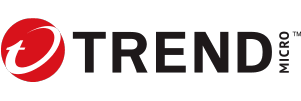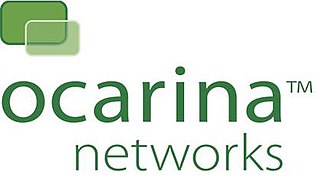
JPEG is a commonly used method of lossy compression for digital images, particularly for those images produced by digital photography. The degree of compression can be adjusted, allowing a selectable tradeoff between storage size and image quality. JPEG typically achieves 10:1 compression with little perceptible loss in image quality. Since its introduction in 1992, JPEG has been the most widely used image compression standard in the world, and the most widely used digital image format, with several billion JPEG images produced every day as of 2015.

JPEG 2000 (JP2) is an image compression standard and coding system. It was developed from 1997 to 2000 by a Joint Photographic Experts Group committee chaired by Touradj Ebrahimi, with the intention of superseding their original JPEG standard, which is based on a discrete cosine transform (DCT), with a newly designed, wavelet-based method. The standardized filename extension is .jp2 for ISO/IEC 15444-1 conforming files and .jpx for the extended part-2 specifications, published as ISO/IEC 15444-2. The registered MIME types are defined in RFC 3745. For ISO/IEC 15444-1 it is image/jp2.

Eolas is a United States technology firm formed as a spin-off from the University of California, San Francisco (UCSF), in order to commercialize UCSF's patents for work done there by Eolas' co-founders, as part of the Visible Embryo Project. The company was founded in 1994 by Dr. Michael Doyle, Rachelle Tunik, David Martin, and Cheong Ang from the UCSF Center for Knowledge Management (CKM). The company was created at the request of UCSF, and was founded by the inventors of the university's patents.

Trend Micro Inc. is an American-Japanese cyber security software company. The company has globally dispersed R&D in 16 locations across every continent excluding Antarctica. The company develops enterprise security software for servers, containers, & cloud computing environments, networks, and end points. Its cloud and virtualization security products provide automated security for customers of VMware, Amazon AWS, Microsoft Azure, and Google Cloud Platform.
ART is a proprietary image file format used mostly by the America Online (AOL) service and client software.

G.729 is a royalty-free narrow-band vocoder-based audio data compression algorithm using a frame length of 10 milliseconds. It is officially described as Coding of speech at 8 kbit/s using code-excited linear prediction speech coding (CS-ACELP), and was introduced in 1996. The wide-band extension of G.729 is called G.729.1, which equals G.729 Annex J.
Neither software nor computer programs are explicitly mentioned in statutory United States patent law. Patent law has changed to address new technologies, and decisions of the United States Supreme Court and United States Court of Appeals for the Federal Circuit (CAFC) beginning in the latter part of the 20th century have sought to clarify the boundary between patent-eligible and patent-ineligible subject matter for a number of new technologies including computers and software. The first computer software case in the Supreme Court was Gottschalk v. Benson in 1972. Since then, the Supreme Court has decided about a half dozen cases touching on the patent eligibility of software-related inventions.

In international law and business, patent trolling or patent hoarding is a categorical or pejorative term applied to a person or company that attempts to enforce patent rights against accused infringers far beyond the patent's actual value or contribution to the prior art, often through hardball legal tactics Patent trolls often do not manufacture products or supply services based upon the patents in question. However, some entities, which do not practice their asserted patent, may not be considered "patent trolls", when they license their patented technologies on reasonable terms in advance.
NTP, Inc. is a Virginia-based patent holding company founded in 1992 by the late inventor Thomas J. Campana Jr. and Donald E. Stout. The company's primary asset is a portfolio of 50 US patents and additional pending US and international patent applications. These patents and patent applications disclose inventions in the fields of wireless email and RF Antenna design. The named inventors include Andrew Andros and Thomas Campana. About half of the US patents were originally assigned to Telefind Corporation, a Florida-based company partly owned by Campana.

Openwave Systems Inc. is a division of Enea. It provides video traffic management and 5G mobile products.

1-Click, also called one-click or one-click buying, is the technique of allowing customers to make purchases with the payment information needed to complete the purchase having been entered by the user previously. More particularly, it allows an online shopper using an Internet marketplace to purchase an item without having to use shopping cart software. Instead of manually inputting billing and shipping information for a purchase, a user can use one-click buying to use a predefined address and credit card number to purchase one or more items. Since the expiration of Amazon's patent, there has been an advent of checkout experience platforms, such as ShopPay, Simpler, PeachPay, Zplit, and Bolt which offer similar one-click checkout flows.
Open Invention Network (OIN) is an intellectual property rights company based in Durham, United States. It operates as an entity specialising in the acquisition of patents, subsequently granting royalty-free licenses to its community members. These members are obligated not to assert their own patents against Linux and its associated systems and applications as per the terms of the licensing agreements established by OIN.
The involvement of the public in patent examination is used in some forms to help identifying relevant prior art and, more generally, to help assessing whether patent applications and inventions meet the requirements of patent law, such as novelty, inventive step or non-obviousness, and sufficiency of disclosure.
Opposition to software patents is widespread in the free software community. In response, various mechanisms have been tried to defuse the perceived problem.

Ocarina Networks was a technology company selling a hardware/software solution designed to reduce data footprints with file-aware storage optimization. A subsidiary of Dell, their flagship product, the Ocarina Appliance/Reader, released in April 2008, uses patented data compression techniques incorporating such methods as record linkage and context-based lossless data compression. The product includes the hardware-appliance-based compressor, the Ocarina Optimizer and a real-time decompressor, the software-based Ocarina Reader.
Thomas G. Lane is a computer scientist dedicated to open-source software. In a 2000 survey, he was listed as one of the top 10 contributors to an intended-to-be-representative sample of open-source software, having contributed 0.782% of the total code.
i4i is an independent software company specializing in the delivery of XML / SGML document processing software in Toronto, Ontario, Canada, founded by Michel Vulpe in 1993.
A video coding format is a content representation format of digital video content, such as in a data file or bitstream. It typically uses a standardized video compression algorithm, most commonly based on discrete cosine transform (DCT) coding and motion compensation. A specific software, firmware, or hardware implementation capable of compression or decompression in a specific video coding format is called a video codec.
Versata Development Group, Inc. v. SAP America, Inc., 793 F.3d 1306, is a July 2015 decision of the Federal Circuit affirming the final order of the Patent Trial and Appeal Board (PTAB), the recently created adjudicatory arm of the United States Patent and Trademark Office (USPTO), invalidating as patent ineligible the claims in issue of Versata's U.S. Patent No. 6,553,350. This was the first case in the Federal Circuit reviewing a final order in a Covered Business Method (CBM) invalidation proceeding under the America Invents Act (AIA). The case set an important precedent by deciding several unsettled issues in the interpretation of the CBM provisions of the AIA>, including what are business-method patents under the AIA and whether the AIA authorizes the PTO to hold such patents invalid in CBM proceedings on the ground that they are patent ineligible under 35 U.S.C. § 101 as "abstract ideas."









